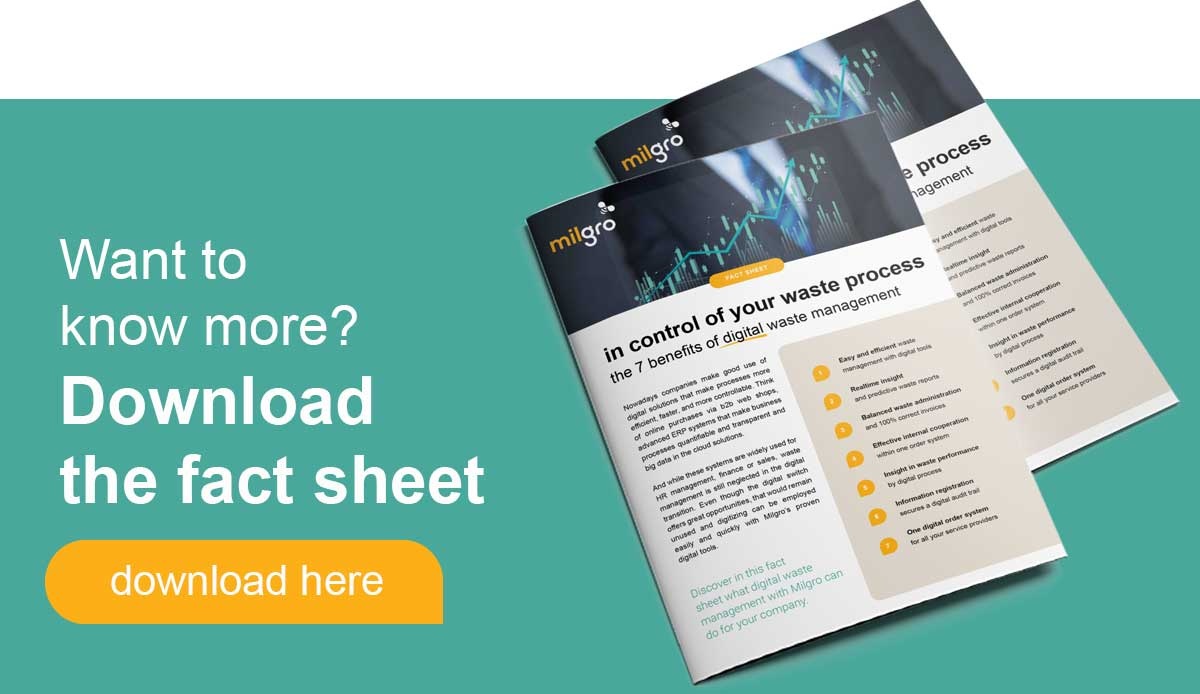The principle of Total Costs of Ownership (TCO) is becoming more and more common in our economic thinking. Because the purchase price is of course not the same as the total cost of a product or service. This principle can be perfectly translated into waste management. We call that Total Cost of Waste (TCW).
Those who only look at the lowest price per unit of product may think they are best off, but ignore the broader picture and the long term - and all the additional costs, which are by no means always clear. It is therefore wise to include all costs when purchasing a product or service, up to and including the moment that it is renounced at the end of its useful life. This approach is based on the Total Cost of Ownership (TCO).
From TCO to TCW
Tariffs are often still central when making purchasing choices for waste management. Of course they are not unimportant and moreover they seem easy to judge. But it is also good for waste management to look more broadly than at the waste rate alone.
We are not talking about Total Cost of Ownership, but about Total Cost of Waste (TCW). So, what are the total direct and indirect costs of waste management, over the entire term of the contract? In addition to the rate of one tonne of waste, at least three other factors influence the Total Cost of Waste: the quality of the waste management process, the achieved waste performance and sustainability.
Quality: digital waste management as a basis
Quality is about more than the question of whether an organization is fully operationally unburdened. Quality also means the ability of an organization to organize a controlled waste management process and to make all costs transparent and verifiable. A digital waste management system is crucial for this.
A digital system makes it easier to obtain and monitor reliable and complete waste data. In addition, it enables organizations to create waste reports, check invoices and perform quality or environmental audits.
With reliable data as a basis, organizations are 'in control' and indirect costs of waste management can be reduced. These are costs that are often not measured and are therefore not included. Moreover, data and insight are indispensable to be able to steer towards better waste performance. The Total Cost of Waste can also be reduced in this way.
Basics in order? Then focus on waste performance
A controlled process and data can be used to focus on better waste performance. Think, for example, of minimizing residual waste, optimal separation and therefore the best quality of mono flows, and reducing the number of transport movements. These are examples of direct waste costs that are part of the Total Cost of Waste.
Based on insight, other (indirect) costs can also be reduced. Important in this regard are the costs of internal waste logistics: in fact the labor costs involved in internal collection and disposal. Especially within logistics environments, these costs are considerable and there is often a considerable saving potential.
From sustainability to profitable sustainability
Finally, sustainability also has a place in waste management based on the Total Cost of Waste. The most concrete and current issue is the CO2 emissions associated with the way in which waste management is organised. Now that more and more CO2 is being priced (and the price is rising), it is also possible to translate sustainability performance into costs.
With qualitative, performance-oriented and sustainable waste and raw materials management, the Total Cost of Waste (TCW) is reduced. And with that, profitable sustainability comes within reach: lower costs and improved sustainability go hand in hand. Earth & earn together.
From linear to circular
It is good to realize that a Total Cost of Waste approach is based on a linear waste perspective. Thinking and acting from TCW is an important and necessary intermediate step towards a circular perspective. We no longer talk about waste, but about raw materials. The potential for companies is therefore much greater, because this approach is based on the costs and returns of natural capital. By properly managing natural capital, organizations can actually increase the return on raw materials. This theme will take off in the coming years. Milgro will keep taking its clients along this path.
Steps towards sustainable procurement of waste and sustainable resources management
- Shifting perspective from waste rates to Total Cost of Waste
- Taking digital waste management as the basis for optimizing waste performance
- Taking sustainability into account and steering towards profitable sustainability
- Exploit circular opportunities and increase return on natural capital
Procurement holds the key to sustainable policy
Looking beyond competitive waste rates gives buyers an interesting key to a more sustainable and profitable purchasing process. They work together with operational, facility, sustainability and financial departments of organizations. In this way, waste management (or better: raw materials management) becomes an integral part of sustainable business operations.
Would you like to know more about Total Costs of Waste?
Milgro supports companies in introducing sustainable waste and sustainable natural resources management, for example by taking Total Costs of Waste as a starting point. Want to know more about how we do this? Read more on digital waste management or download the factsheet.
Want to stay informed? Follow us on LinkedIn











